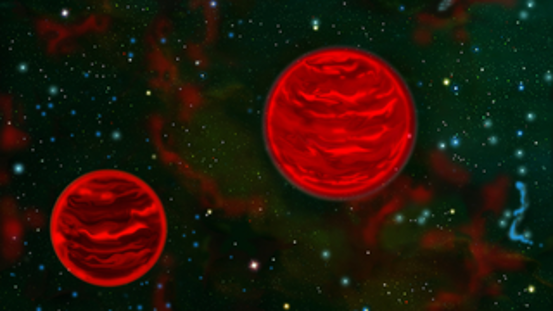As of April 1st of this year, astronomers have discovered 5,653 non-Solar System planets circling 4,161 stars that are not our Sun. How are they found? Four methods of discovery have been employed. These include:
- Transit is the most common method but only works if the star system exhibits a similar planetary plane to our Solar System. In these conditions, astronomers can detect a dimming of light from the star each time an exoplanet passes in front of it.
- Radial Velocity measures the gravitational pull of large exoplanets as they orbit a star. The planet causes a Doppler shift in the star’s light.
- Direct Imaging is exactly as it sounds. Using powerful telescopes, astronomers can detect the faint and reflected light from objects circling their home star. The advantage of this method is it makes it possible to study an exoplanet’s atmosphere and even some surface features.
- Microlensing describes what happens when the gravity of a massive object bends the light from objects further away. If the closer star has an exoplanet, the planet’s gravity also bends the light causing the more distant star to appear brighter for short periods. Microlensing can detect smaller exoplanets and is used to find planets that are not orbiting stars.
Microlensing and direct imaging have helped the James Webb Space Telescope (JWST) spot planets including some that appear to be permanent wanderers in interstellar space. This is bringing into question our scientific explanations of how planets form. It was pretty much de rigueur belief that planets only came into existence from the condensing of nebulae and gravitational attraction. This has been the theory of how our Solar System formed.
The nebula that preceded the Solar System through gravitational forces concentrated more and more matter into the centre eventually making it so dense that fusion occurred. There was light and a star was born.
The planets formed from materials in the nebula that continued to circle our star with gravitational forces causing the dust and other particles to begin to aggregate creating planets.
So how do rogue planets exist? One theory is that these objects are orphans from stellar systems ejected when close encounters with other planets within their systems catapult them into interstellar space. Another theory is that the gravitational attraction of a passing star pulled these objects into interstellar space. A third states the remnants of a supernova could form planets in interstellar space. And a fourth is that rogue planets are really failed stars.
Does this explain the latest JWST discovery? Two larger-than-Jupiter-sized objects were recently detected by the JWST wandering through interstellar space. They both emit radiowaves which is itself unusual. Their radio wave signatures indicate they are hundreds of times brighter than any previously detected exoplanet. The JWST also has tracked their path and determined they are moving through space quickly.
Designated Jupiter-Mass Binary Objects or JuMBOs, scientists believe these types of objects may be far more abundant. One astronomer who was in on the discovery believes there could be zillions of JuMBOs and other non-stellar exoplanets wandering through interstellar space.
The mechanism for how these exoplanets form is not yet known. The explanation that these JuMBOs are failed stars could explain these objects. Could JuMBOs be the earliest stages in the formation of sub-stellar masses like brown dwarfs?
The definition of a brown dwarf is a celestial object with a mass between 13 to 80 times larger than the planet Jupiter but insufficient in size to trigger fusion and become a star. Brown dwarfs have been called failed stars. Brown dwarfs are abundant throughout the Milky Way.
JuMBOs increasingly appear to be abundant. Forty-two have been found to date. They almost always are in pairs. Studies of brown dwarfs show that 8% have binary partners and that the younger the brown dwarf the more likely a partner accompanies it. Could gravitational force over time cause JuMBOs to merge and become brown dwarfs?
These JWST-discovered JuMBOs are the biggest found to date. They are smaller than any known brown dwarfs measuring 11 times the size of Jupiter. Something else about them is unique and still unexplained. All found JuMBOs before these do not emit radio waves. Neither do brown dwarfs, at least not emissions with signatures like these. So a theory to explain the radio emissions of these JuMBOs has yet to emerge.
Luis F. Rodriguez, Professor at the National Autonomous University of Mexico, and one of the astronomers studying JuMBOs states: “With regular stars and brown dwarfs, there are mechanisms that explain radio emissions. For JuMBOs, we have no mechanism to explain this very strong radio emission.”
How far has our knowledge of the Universe come in my lifetime? When I was born, astronomers, astrophysicists, and cosmologists were in a heated debate about whether the Universe was a product of a primordial Big Bang, or was in a steady state where galaxies and stars formed in the interstellar and intergalactic medium of space.
We only knew one stellar system, our own. The big debate about planets was whether to designate Pluto the ninth or define it differently. Today we have a Solar System with eight planets, Pluto is just one of numerous dwarf planets existing in the Kuiper Belt beyond it, and there is a companion Oort Cloud even further out circling the Sun. Beyond our Solar System, we now know that many others exist with billions more planets plus rogue wanderers coursing through interstellar space.
What remains to be found? How many more of our certainties will come undone as we continue to study the cosmos?









[…] astronomers add Brown dwarfs to the M-star category, although as I have previously written they are also called failed stars because their masses are insufficient to trigger fusion and have […]